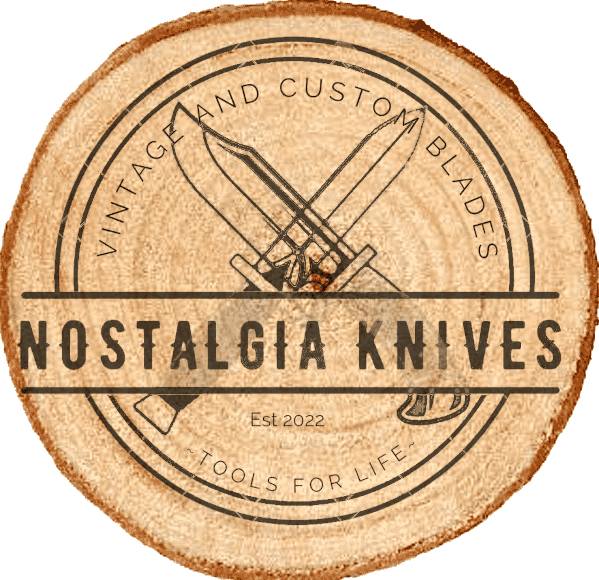Forging a Legacy: A Timeline of Knife-Making Techniques Through the Ages.
Posted on November 19, 2023 by congo
Forging a Legacy: A Timeline of Knife-Making Techniques Through the Ages.
Introduction:
The craft of knife-making has evolved through the centuries, shaped by technological advancements, cultural influences, and the constant pursuit of perfection. This article embarks on a journey through time, tracing the timeline of knife-making techniques from ancient origins to the modern era. From rudimentary stone blades to the precision engineering of contemporary knives, each era has left its mark on the art and science of forging blades.
Stone Age and the Birth of Blades:
The earliest knives were born of necessity during the Stone Age. Our ancestors, recognizing the utility of sharp edges, crafted knives from chipped stones, such as flint and obsidian. These primitive blades served as essential tools for cutting, hunting, and survival. The Stone Age laid the foundation for the human fascination with blades, setting the stage for millennia of innovation.
Copper and Bronze Age Mastery:
With the advent of metallurgy during the Copper and Bronze Ages, a new chapter in knife-making began. Early metalworkers discovered that alloying copper with tin produced bronze, a material superior in durability and sharpness. This technological leap led to the creation of metal knives, marking a significant shift from stone tools. Bronze knives became invaluable in daily life, shaping the way societies approached tool-making and craftsmanship.
Iron Age Revolution:
The Iron Age ushered in a revolution in knife-making with the widespread use of iron. Iron knives, sharper and more resilient than their bronze counterparts, became essential tools across various cultures. Advances in blacksmithing techniques allowed for the refinement of iron blades, setting the stage for the creation of sharper and more versatile knives.
Middle Ages and the Art of the Sword-smith:
The Middle Ages witnessed the rise of the skilled sword-smith, a master craftsman capable of forging intricate blades. The techniques developed during this period laid the groundwork for the artistry and precision that define modern knife-making. Sword-smiths in regions like Japan, Europe, and the Middle East became revered for their ability to create blades with unparalleled sharpness, durability, and aesthetic appeal.
Renaissance and the Birth of the Artisan:
The Renaissance period saw a resurgence of interest in the arts and craftsmanship, including knife-making. Artisans began to focus not only on the functionality of blades but also on their aesthetic qualities. Elaborate handles, ornate engravings, and decorative motifs became integral to the design of knives, reflecting the fusion of utility and artistry.
Industrial Revolution and Mass Production:
The Industrial Revolution marked a significant turning point in knife-making. Mass production techniques, powered by machinery, enabled the creation of standardized blades on a large scale. This era saw the emergence of affordable, accessible knives for a broader audience, changing the landscape of the cutlery industry.
20th Century Innovations:
The 20th century brought about further innovations in knife-making. The development of stainless steel revolutionized blade materials, offering enhanced corrosion resistance and durability. This period also witnessed the rise of folding knives with locking mechanisms, providing a balance between portability and functionality. Tactical knives designed for specific applications, such as survival and military use, became prominent, showcasing the adaptability of knife-making to meet diverse needs.
Contemporary Craftsmanship:
In the 21st century, knife-making has become a blend of traditional craftsmanship and cutting-edge technology. Artisanal knife-makers continue to create custom blades, each a unique work of art, while advancements in materials and manufacturing processes contribute to the production of high-performance knives for various purposes. The contemporary era reflects a synthesis of centuries-old techniques and the latest innovations, forging a legacy that honors the rich history of knife-making.
Conclusion:
The timeline of knife-making techniques is a testament to human ingenuity, adaptability, and the constant pursuit of perfection. From the humble stone blades of our ancestors to the precision-engineered knives of today, each era has left its imprint on the evolution of this timeless craft. As we navigate the diverse landscapes of history, we find that the art of forging blades is not just a craft but a living legacy, shaping the tools we use and the stories we tell.
Category: History & Legacy
Free Shipping on orders over $79.00
- - USA only
- - USPS Flat Rate
- - Not valid with other promotions
Make An Offer!
- - Button only visible to logged in users.
- - Unreasonable offers will be dismissed.
- - Submitting an offer is not a commitment to purchase.
- - Some items excluded from Make Offer feature.
Category Menu
- Under $109696 products
- Camp/Scout Knives3737 products
- Chef Knives33 products
- Collectible Knives335335 products
- True Nostalgia2323 products
- Damascus Knives3434 products
- Everyday Carry[EDC]427427 products
- Fixed-Blade5454 products
- Folding-Blade440440 products
- Straight-Razor11 product
- Pocket Knives397397 products
- Hunting Knives7878 products
- Money Clip Knives22 products
- Multi-Tool Knives4848 products
- Novelty Knives3737 products
- The Barrel33 products
- By Manufacturer388388 products
- Amica11 product
- Anvil Brand44 products
- AutoPoint22 products
- Bear MGC11 product
- Bear & Son Cutlery11 product
- Böker1212 products
- Böker Solingen66 products
- Boker USA33 products
- Boker Plus22 products
- Browning Knives22 products
- Buck knives22 products
- Buck Creek11 product
- CamCo33 products
- Camillus Cutlery2727 products
- Case XX™2626 products
- Cattaraugus Cutlery Co.33 products
- Cherokee11 product
- Clauss Cutlery11 product
- Colonial Knives1818 products
- Coyote Prov. USA11 product
- Ranger11 product
- Columbia River11 product
- Comanche11 product
- Craftsman55 products
- Crowing Rooster11 product
- Cuda11 product
- Custom/Handmade3232 products
- CutCo11 product
- E.C. Simmons Cutlery Co.11 product
- Elk Ridge11 product
- ESEE11 product
- F.A. Bower Imp. Co.11 product
- Federal Knife Co.33 products
- Johnston USA11 product
- Frost Cutlery1515 products
- White Tail11 product
- Steel Warrior55 products
- Frost Family11 product
- G.C. & CO Mora, Sweden11 product
- Gerber44 products
- Gerson Co. Boston11 product
- Hammer Brand66 products
- Hen & Rooster™1010 products
- HIT USA11 product
- Imperial3333 products
- iPak11 product
- IXL George Wostenholm11 product
- J.B Rand & Co.11 product
- John Primble11 product
- Johnson Western Works11 product
- Ka-Bar22 products
- Keen Kutter11 product
- Kent22 products
- Kentucky Cutlery44 products
- Eagle Edge44 products
- Kissing Crane11 product
- Klein Tools Inc.44 products
- Lark33 products
- Latama11 product
- New York Knife Co.22 products
- Old Forge Knives11 product
- Other Knives22 products
- Owl Head22 products
- PAL Cutlery Co.11 product
- Parker Cutlery Co.11 product
- PIC11 product
- Providence Cutlery66 products
- Puma33 products
- Queen Cutlery Co.11 product
- Remington22 products
- Ridge Runner11 product
- RILL Simple Tools11 product
- Rite Edge11 product
- Robeson Cutlery33 products
- Rough Rider33 products
- Royal Brand Cutlery11 product
- Sabre22 products
- Schrade3232 products
- Old Timer1717 products
- Uncle Henry66 products
- Sears55 products
- Seki22 products
- Sharp33 products
- Sheffield Knives55 products
- Simonds11 product
- SOG22 products
- Solingen Knives11 product
- Syracuse USA11 product
- Clover Brand11 product
- The Ideal1919 products
- Thornton USA11 product
- Ulster77 products
- Unknown/Misc.4343 products
- Utica Cutlery Company99 products
- Kutmaster99 products
- Valley Forge - Newark, NJ11 product
- Victorinox1010 products
- Wenger33 products
- Western22 products
- Winchester11 product
- Zippo55 products
EXCELLENT rating
Based on 1 reviews

By using this site you're accepting
our Online Sales Disclaimer
*Must Be 18 years or older to purchase*
Buyers Are Responsible For Knowledge Of And Adherence To Their Country, State and Local Knife Laws.
CA PROP 65 ⚠WARNING: Cancer and Reproductive Harm - www.P65Warnings.ca.gov
Copyright © 2025 · All Rights Reserved · NostalgiaKnives.com
Theme: Natural Lite by Organic Themes
